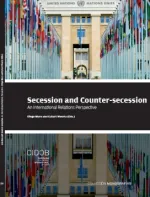How do states respond to secession? The dynamics of state recognition

The leaders of independence movements often imagine a smooth transition to a new regime and political community. Noting irreconcilable differences with the existing government, they argue that they have exhausted the potential remedies to their grievances within the normal political system. Convinced that justice and selfdetermination are best served by creating a newly independent country whose political boundaries align with those of their nation, they assert that a popular referendum or a more representative regional body’s vote will vindicate their claim to authority and convince the rest of the country to concede. In recent years, a so-called “velvet divorce”, similar to Czechoslovakia’s disintegration, approximates their ideal scenario. Unfortunately, the reality facing these movements is rarely so straightforward, uncontested, non-violent, or contained.